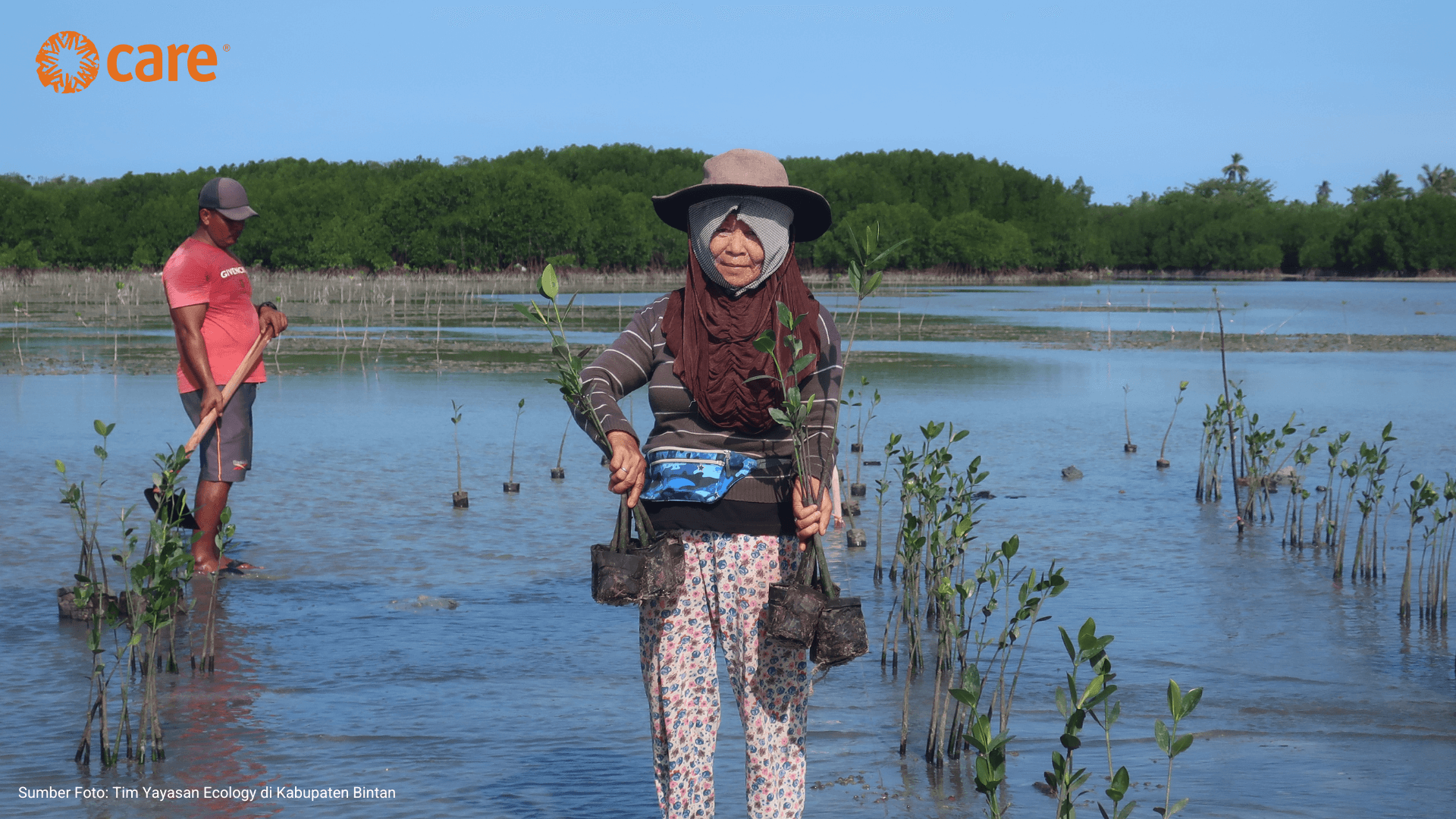The presence of mangroves plays a vital role in protecting coastal areas and ecosystems. Bintan Regency, located in Riau Islands Province, is home to mangrove forests that support both biodiversity and the livelihoods of local fishermen. Yayasan CARE Peduli (YCP), supported by Traveloka, has planted 50,000 mangrove trees across an area of 14,000 hectares in Berakit Village. Women’s groups in the village play a key role in the process—ranging from seedling preparation and planting to monitoring mangrove growth.
In this initiative, the involvement of women is essential through the Women’s Economic Business Groups (KUEP) Melati and Tenggiri, as well as the Community Surveillance Group (Pokmaswas). These three groups regularly monitor and measure the development of both the seedlings and the mangroves that have already been planted.
Ayunarti, Chairperson of KUEP Tenggiri, explained that during the planting process, she and other members of the group make every effort to ensure the mangroves can grow well. One such effort includes creating special pathways for fishermen to pass through or fish near the planting area.
“When we were planting the mangroves, we provided a pathway for fishermen to move from land to sea, because they often walk or use small boats to go fishing. We also regularly remind them not to cast nets in areas where new mangroves have been planted,” she said.
In addition to informing fishermen, Ayunarti and other women in the group also frequently raise awareness among villagers about the importance of protecting the mangroves. According to her, the conservation of mangroves in their village is everyone’s responsibility.
“If we continue to preserve the mangroves, the area will eventually become a habitat for crabs and other sea creatures. That’s why we must take good care of it. In the past, people didn’t understand, so many mangroves were cut down to make charcoal. Now, the government has banned mangrove logging, so we must preserve it for our future generations,” she emphasized.
Similarly, Rahmadeni, a member of Pokmaswas Srikandi in Berakit Village, explained that in addition to monitoring mangrove growth, she and her fellow members are also responsible for educating the community about which areas are permitted for fishing activities.
“What we are doing now is introducing to the community the boundaries of the marine zones that are allowed and not allowed for fishing,” she added.
Furthermore, Rahmadeni stated that the group actively encourages the public to participate in mangrove planting and protection efforts. She noted that Pokmaswas, together with community members and KUEP, regularly measures the growth of the 50,000 mangroves that have been planted.
“Pokmaswas also measures the height of the planted mangroves and those still in the nursery. As of now, from the 50,000 planted mangroves, the average height is about 50 cm, and the survival rate is 100 percent,” she explained.
This program, carried out by Yayasan CARE Peduli in collaboration with Ecology Foundation and supported by Traveloka, aims to contribute to Indonesia’s Net Zero Emission target by 2060. It also aligns with the government’s vision to gradually reforest over 12 million hectares of degraded forest in support of green and blue economies, food security, climate resilience, and community sustainability.
Writer: Kukuh A. Tohari


